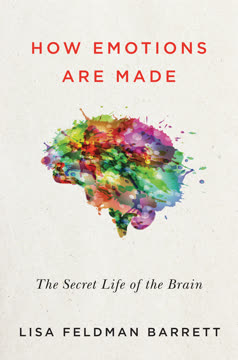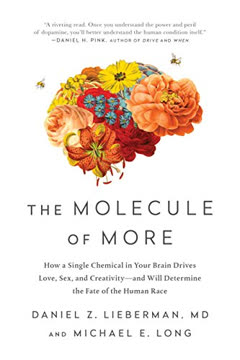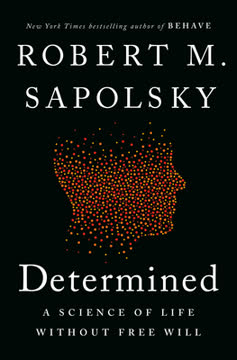重点摘要
1. 行为由基因、环境和文化的复杂互动塑造
基因不是指挥生物事件的自主代理人。
基因影响是复杂的。 虽然基因在行为中起作用,但其影响通常很小,并且高度依赖于环境因素。基因-环境互动意味着同一基因在不同的环境中可能有不同的效果。例如:
- MAOA基因,曾被称为“战士基因”,只有在经历过童年虐待的人中才会增加攻击性
- DRD4基因,与寻求新奇有关,其效果取决于文化背景
文化因素至关重要。 文化塑造了基因的表达方式以及环境因素对行为的影响。一些关键的文化影响包括:
- 集体主义与个人主义取向
- 社会经济不平等
- 宗教和意识形态信仰
- 冲突或合作的历史经验
2. 大脑的结构和功能在一生中不断演变,影响行为
关键是,最后一个完全成熟的大脑区域(在突触数量、髓鞘化和代谢方面)是额叶皮层,直到二十多岁才完全上线。
神经可塑性是持续的。 大脑在一生中不断变化和适应,响应经验和环境输入。神经可塑性的关键方面包括:
- 突触修剪和强化
- 在某些大脑区域形成新神经元(神经发生)
- 髓鞘化的变化影响信号传输速度
存在关键期。 某些发育窗口对塑造大脑结构和功能尤为重要:
- 早期儿童期:快速的突触形成和修剪
- 青春期:前额皮层和情绪调节系统的成熟
- 成年期:持续的可塑性,但速度比早期慢
3. 激素在塑造社会行为和攻击性方面起着微妙的作用
睾酮使我们更愿意做出获得和维持地位所需的行为。
情境是关键。 像睾酮和催产素这样的激素对行为没有简单的、普遍的影响。它们的影响取决于社会情境和个体差异:
- 如果需要获得地位,睾酮可以增加亲社会行为
- 催产素增强群体内的联系,但可能增加对外群体的敌意
激素-行为关系是双向的。 行为可以影响激素水平,正如激素影响行为一样:
- 赢得比赛会增加睾酮水平
- 社会联系会增加催产素水平
4. 童年经历对成年行为和大脑功能有持久影响
童年逆境增加了成年人患有(a)抑郁、焦虑和/或物质滥用的几率;(b)认知能力受损,特别是与前额皮层功能相关的能力;(c)冲动控制和情绪调节受损;(d)反社会行为,包括暴力;以及(e)重现童年逆境的关系(例如,与虐待伴侣在一起)。
早期压力有长期影响。 童年逆境会导致大脑结构和功能的持久变化:
- 升高的压力激素影响海马体和前额皮层的发育
- 杏仁核的情绪处理改变
积极的经历也很重要。 童年时期支持性、养育性的环境促进健康的大脑发育和韧性:
- 安全的依恋促进更好的情绪调节
- 丰富、刺激的环境增强认知发展
5. 青春期是大脑发育和行为模式的关键时期
如果到青春期,边缘系统、自主神经系统和内分泌系统都在全速运转,而前额皮层仍在研究组装说明书,我们就解释了为什么青少年如此令人沮丧、伟大、愚蠢、冲动、鼓舞人心、破坏性、自我破坏、自我无私、自私、不可思议和改变世界。
前额皮层的成熟是关键。 相对于其他大脑区域,前额皮层的晚期发育解释了许多青少年的行为:
- 增加的冒险行为和寻求刺激
- 情绪反应增强
- 难以控制冲动和进行长期规划
同伴影响达到顶峰。 青少年特别容易受到社会影响:
- 对社会拒绝的敏感性增加
- 强烈的同伴认可驱动力
- 在同伴面前更容易冒险
6. 文化差异显著影响行为、认知和社会规范
文化的影响是巨大的。
感知和认知各不相同。 不同文化塑造人们处理信息和感知世界的方式:
- 个人主义文化关注视觉场景中的中心对象
- 集体主义文化更多关注背景信息
社会行为受文化影响。 文化规范塑造人际互动和道德判断:
- 公平和正义的概念在不同文化中各不相同
- 情绪表达和调节方式不同
文化演变是持续的。 文化不断变化和适应:
- 全球化导致文化混合和杂交
- 技术变化创造新的文化实践和规范
7. 进化塑造了人类行为,但我们经常偏离进化预测
我们天生就非常困惑——轻度一夫多妻制,介于两者之间。
人类的交配系统是灵活的。 不同于许多具有固定交配模式的物种,人类表现出一夫一妻制和一夫多妻制的混合倾向:
- 大多数文化允许一夫多妻制,但大多数个体是社会上的一夫一妻制
- 人类的性二态性介于配对物种和锦标赛物种之间
合作超越了亲属关系。 人类表现出前所未有的与非亲属合作的水平:
- 大规模社会需要陌生人之间的合作
- 文化机构促进超越直接亲属的合作
8. 合作和利他行为源于个体、亲属和群体选择的结合
动物不会为了物种的利益而行为。它们的行为是为了最大化传递到下一代的基因数量。
多层次选择在起作用。 人类行为受以下因素影响:
- 个体选择:有利于个人生存和繁殖的特征
- 亲属选择:帮助共享基因的亲属
- 互惠利他主义:与非亲属的互利合作
- 群体选择:有利于群体的特征,即使对个体有成本
文化实践影响选择。 人类文化创造了新的选择压力:
- 社会规范可以促进有利于群体的行为
- 宗教和法律等机构强制合作
9. 神经科学揭示了我们最佳和最差行为的生物基础
大脑不是行为“开始”的地方。它只是所有因素在接下来的章节中汇聚并创造行为的最终共同路径。
道德和同理心的神经回路。 参与亲社会行为的关键大脑区域:
- 前额皮层:执行控制和道德推理
- 前扣带回皮层:同理心和冲突监控
- 杏仁核:情绪处理和恐惧反应
攻击性和暴力的生物基础。 神经和激素因素起作用:
- 前额控制和边缘情绪反应之间的不平衡
- 血清素和多巴胺信号的改变
- 早期生活压力影响大脑发育
可塑性允许改变。 了解行为的神经生物学基础为干预提供了可能性:
- 通过增强前额功能或减少杏仁核反应的针对性治疗
- 促进健康大脑发育的社会和环境干预
人类独特的自由意志下载《行为》PDF免费2023年罗伯特·萨波尔斯基所著《人类在最佳和最差状态下的生物学》。
最后更新日期:
FAQ
What's Behave: The Biology of Humans at Our Best and Worst about?
- Exploration of Human Behavior: The book examines the biological underpinnings of human behavior, focusing on aggression, violence, and prosocial actions. It explores how factors like neurobiology and hormones influence our actions.
- Interdisciplinary Approach: Robert M. Sapolsky integrates insights from neurobiology, psychology, and sociology to provide a comprehensive understanding of human behavior. He argues that behavior requires a multifaceted perspective.
- Contextual Understanding: Sapolsky emphasizes that context is crucial in determining whether a behavior is seen as good or bad, highlighting how the same action can be interpreted differently based on circumstances.
Why should I read Behave: The Biology of Humans at Our Best and Worst?
- Insightful Analysis: Sapolsky offers a deep dive into the complexities of human behavior, making it valuable for those interested in psychology, biology, or social sciences. His engaging style makes complex concepts accessible.
- Relevance to Current Issues: The book addresses societal issues like violence, morality, and empathy, providing a scientific framework to understand these phenomena, making it timely in today's context.
- Encourages Critical Thinking: By challenging simplistic views of behavior, Behave encourages readers to think critically about human motivations, promoting a nuanced understanding of morality and ethics.
What are the key takeaways of Behave: The Biology of Humans at Our Best and Worst?
- Biology and Behavior Interconnected: Biological factors, including hormones and brain structure, significantly influence behavior. Sapolsky argues against distinguishing between biological, psychological, or cultural aspects of behavior.
- Context Matters: The interpretation of behaviors as good or bad is heavily dependent on context. Sapolsky notes that we often hate the wrong kind of violence but love it in the right context.
- Complexity of Human Nature: Human behavior is influenced by genetics, environment, and social learning, requiring a holistic view rather than isolated components.
What are the best quotes from Behave: The Biology of Humans at Our Best and Worst and what do they mean?
- “The opposite of love is not hate; its opposite is indifference.” This highlights the importance of empathy and engagement, suggesting that apathy can be more damaging than active dislike.
- “We are always shadowed by the threat of other humans harming us.” Reflects the inherent risks in human interactions and the potential for violence, underscoring the need to understand aggression's roots.
- “The more we consume, the hungrier we get.” Addresses the paradox of modern life, where increased access to pleasure can lead to greater dissatisfaction, suggesting insatiable desires can have negative consequences.
How does Robert M. Sapolsky explain aggression in Behave?
- Biological Basis of Aggression: Hormones like testosterone and neurobiological factors contribute to aggressive behavior. Testosterone amplifies preexisting tendencies rather than directly causing aggression.
- Contextual Triggers: Aggression often responds to specific social contexts or challenges, with testosterone levels rising in response to social challenges, increasing aggressive behavior likelihood.
- Learning and Experience: Aggression is shaped by social learning and past experiences, with learned behaviors playing a significant role in future aggression.
What role do hormones play in human behavior according to Behave?
- Influence of Testosterone: Testosterone amplifies existing tendencies rather than causing aggression outright, with its actions being contingent and amplifying.
- Oxytocin and Social Bonds: Oxytocin fosters social bonding and prosocial behavior but also promotes in-group favoritism, making us more prosocial to Us and worse to everyone else.
- Stress Hormones: Chronic stress hormones impair cognitive function and emotional regulation, leading to impulsive and aggressive behaviors, affecting decision-making and empathy.
How does Behave address the concept of free will?
- Skepticism of Free Will: Sapolsky doubts traditional free will, suggesting behaviors are influenced by biological and environmental factors beyond individual control, leading to more compassionate views.
- Complex Interplay of Factors: Behavior results from genetics, hormones, and social context, making it difficult to attribute actions solely to free will.
- Implications for Justice: This perspective challenges moral culpability, suggesting understanding behavior's biological basis can lead to more effective interventions than punitive measures.
What does Robert M. Sapolsky say about the effects of childhood adversity in Behave?
- Long-term Consequences: Childhood adversity links to negative outcomes in adulthood, including mental health issues and antisocial behavior, with multiple adversities dimming chances of a happy adulthood.
- Biological Mechanisms: Early-life stressors elevate glucocorticoid levels, impairing brain development and function, increasing anxiety, depression, and aggression risks.
- Resilience Factors: Despite risks, many individuals with childhood adversity do not develop significant issues, with supportive relationships mitigating adversity effects.
How does Behave explain the relationship between empathy and behavior?
- Empathy as a Complex Emotion: Empathy involves emotional and cognitive components, allowing understanding and sharing of others' feelings, leading to prosocial behavior but can be overwhelming.
- Neurobiological Underpinnings: Brain regions like the anterior cingulate and insula activate when witnessing others in pain, with regulation of adverse empathic emotions leading to prosocial actions.
- Adolescent Empathy: Adolescents experience heightened empathy, leading to positive and negative outcomes, with empathic hyperarousal sometimes hindering effective action.
How does Behave address the impact of culture on behavior?
- Cultural Influences on Behavior: Cultural norms and values shape behaviors, including aggression and prosocial actions, with culture shaping how and where we look at the world.
- Variability Across Cultures: Behaviors acceptable in one culture may differ in another, with moral judgments differing cross-culturally, crucial for addressing global issues.
- Cultural Context in Empathy: Cultural background affects empathic responses and social interactions, with oxytocin's actions depending dramatically on context, influencing how we relate to others.
How does Behave connect behavior to evolutionary biology?
- Evolutionary Perspective on Behavior: Behaviors are understood through evolution, with traits enhancing survival and reproduction favored over time.
- Kin Selection and Altruism: Behaviors promoting relatives' survival can be advantageous for passing on shared genes, illustrating altruism's evolutionary basis.
- Cultural Evolution: Biological traits evolve, and cultural traits change over time, influenced by environmental pressures and social dynamics.
How does Behave relate to current societal issues?
- Understanding Violence and Aggression: Insights into biological and environmental factors contributing to violence and aggression, essential for reducing violence and promoting peace.
- Mental Health Implications: Understanding biological basis of mental health issues, advocating for compassionate treatment approaches, informing policies and practices.
- Promoting Empathy and Cooperation: Emphasizes fostering empathy and cooperation in addressing societal challenges, understanding biological foundations to create a compassionate society.
评论
《行为》从生物学、进化论和文化角度探讨人类行为。萨波尔斯基综合了神经科学、激素、遗传学和环境方面的研究,解释了人类为何会有这样的行为。该书因其全面的视角、引人入胜的写作风格和萨波尔斯基的幽默而备受赞誉。尽管一些评论者认为它内容密集且偶尔有偏见,但许多人认为这是一本突破性的著作,挑战了对人性简单化的看法。萨波尔斯基强调行为的复杂性,反对单一原因的解释,并突出了生物学与环境在塑造人类行为中的相互作用。
Similar Books




















